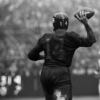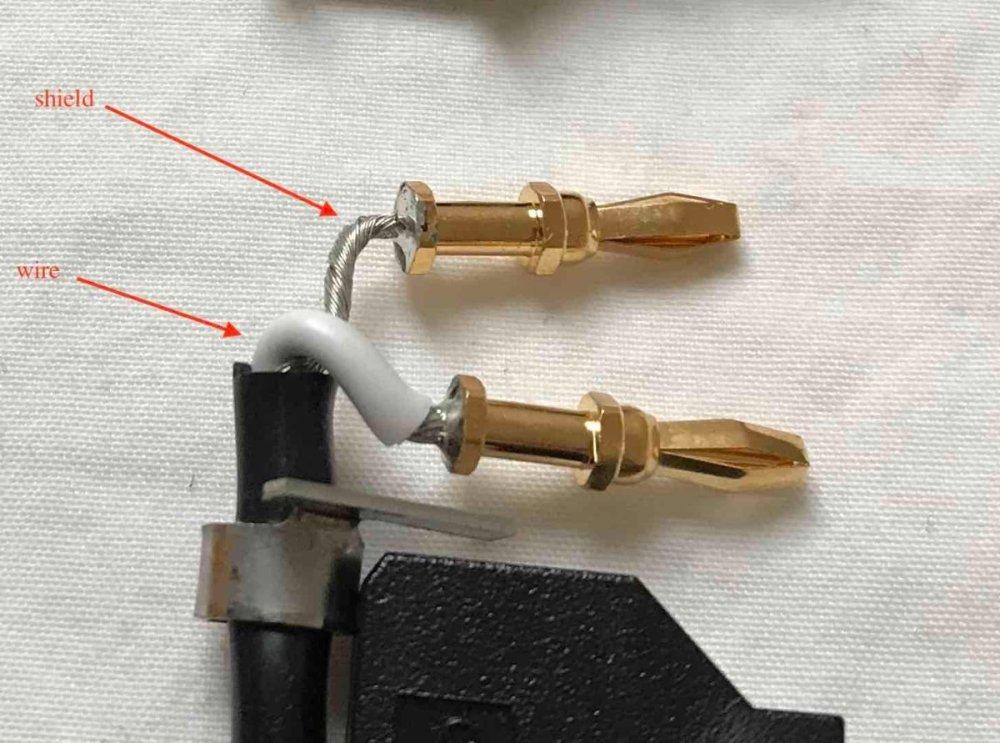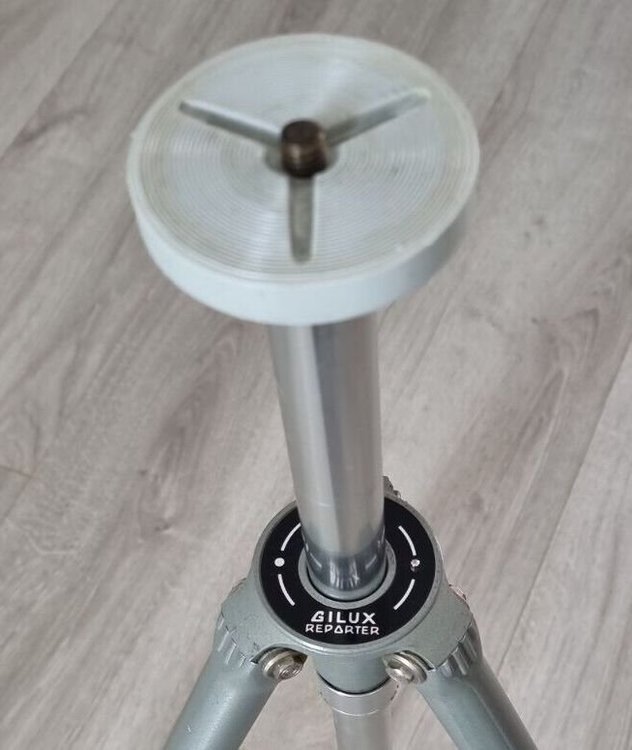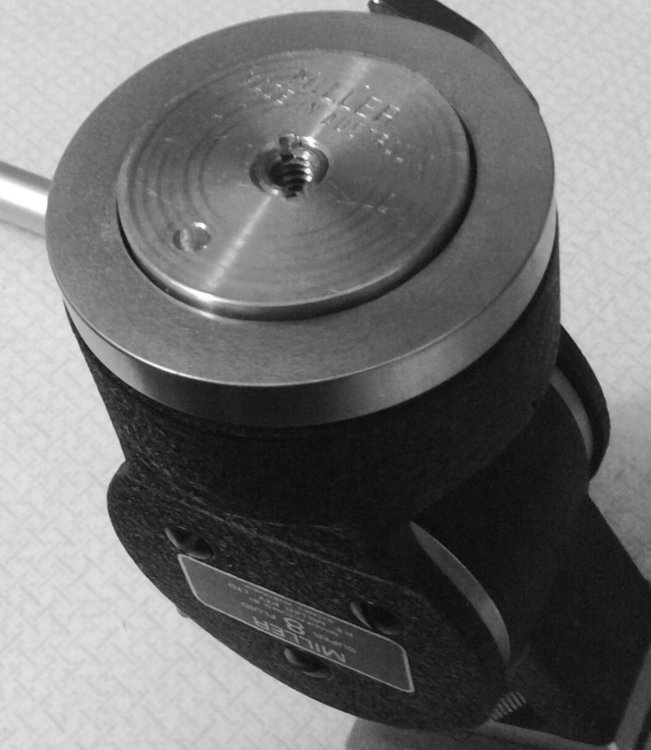-
Posts
66 -
Joined
-
Last visited
Everything posted by Mendes Nabil
-
Emergency question .. Hello all, i have a shooting this evening and i’m just discovering that the increments on my variable ND filter are way off. For exemple : 6 stops on the VND is actually 2.7 stops in real life. Question : What is the most accurate method to test how many stops a filter cuts ? Incident and 1° spot metering have a 1/3 to a full stop difference depending on the range i’m metering, and i don’t know which one to trust.. I’m shooting Ektachrome, Thank you all!
-
Hello all, I was about to replace a d-tap connector with an XLR one, i teared it down to see which wire was "positive" and which was "negative" before soldering, but to my surprise, there is one wire only, and the other pin is connected to "shield".. Is that normal? This a dedolight cable supposed to go from a battery (d-tap side) to a dedolight dimmer for a DLH4. I've already done that, but last time, there was twi wires (dc connectore instead of d-tap). Also, the connector flipped from my hand so i don't know which wire is used for positive and which one is for negative.. I guess white wire is for "positive" and shield for "negative" but i'm not quite sure.. Any help would be greatly welcome, Thanks!
-
Hello all, I'm about to shoot Ektachrome E100 (daylight balanced film) at night on Hasselblad medium format. I will have two tungsten sources, one with a Tokyo blue filter, one without. Two strategies to convert my daylight stock to tungsten : Strategy 1 : 80A filter on the lens. Issues : 1 : I don't know how much light does my 80A filter cuts "exactly", Ektachrome being a slide film, no error is allowed.. 2 : It might introduce some flare or ghost effect 3 :My viewfinder will get dimmer which is an issue at night Advantage: the ambiant tungsten lights will also be corrected Strategy 2 : Gelling my two sources with CTB. Issues : 1 : stacking up a ctb + tokyo blue effect is not a combo i'm sure about 2 : Ambient practical light will not get corrected (They will be minor in the scene) Advantages : No flare issue, and clear viewfinder What would be your strategy? Thank you all,
-

Miller Super 8 fluid head - panning?
Mendes Nabil replied to Matthew Hendrickson's topic in Camera Operating & Gear
Thank you Simon, that was my conclusion too,.. My tripod looks like this (a vintage Gitzo), do i need a plate with a dowel pin between the tripod and the head or maybe just a pin? I don't know what to look for, Thanks,- 11 replies
-
- Miller Fluid Head
- vintage
-
(and 1 more)
Tagged with:
-

Miller Super 8 fluid head - panning?
Mendes Nabil replied to Matthew Hendrickson's topic in Camera Operating & Gear
I just bought this exact same head, can someone tell me what is the bottom hole for? I received it exactly as it is pictured above, am i right thinking that a plate is missing?- 11 replies
-
- Miller Fluid Head
- vintage
-
(and 1 more)
Tagged with:
-

100w Incandescent bulb inside a deep umbrella,
Mendes Nabil replied to Mendes Nabil's topic in Lighting for Film & Video
Describing light is a very subjective task, i love Paolo Roversi words about the "feeling of light", incandescent, like film, resonates with my sensitivity.. Darius Khondji had few words about Leds : " DK : Yes, sometimes I use led panels, especially when I am working with a particular American gaffer who uses them a lot. But I always feel like the result is too cosmetic… a little too perfect, like Kinos. You’ve got to play around with them and diffuse them to make the final result interesting." https://www.afcinema.com/Cinematographer-Darius-Khondji-AFC-ASC-discusses-his-work-on-Magic-in-the-Moonlight-a-film-by-Woody-Allen.html I'll be shooting Hasselblad film on the legendary 500CM for the first time, the feel of this beauty inspires to go above and beyond.. As for the clamp, i'll have to buy something like that to go with it (around the porcelain socket), with the right plate and thread obviously.. For now, i didn't found a better solution : -

100w Incandescent bulb inside a deep umbrella,
Mendes Nabil replied to Mendes Nabil's topic in Lighting for Film & Video
You're totally right about the flatness being somewhat cut by the modifier, that's why i seriously considered going the Led route for that project, but then i came across this video comparing an Aputure Led lamp through diffusion to an incandescent 150w bulb + diffusion too : Maybe i'm biased but to me, the results just speak for themselves, incandescent has that sumptuous deepness that Led lacks.. I'm actually using it as my main light for still photography, medium format Hasselblad with long exposure (1/8 and slower) I've found this clamp : https://www.amazon.co.uk/Phot-R-Studio-Multi-Function-Reflector-Cameras/dp/B00MR0VPOQ that should do the job i guess.. Thank you again for contributing Mark! -

100w Incandescent bulb inside a deep umbrella,
Mendes Nabil replied to Mendes Nabil's topic in Lighting for Film & Video
I appreciate your answer Mark, Thank you! Domestic fittings have a 60watts tolerance nowadays because of the large spread of LEDS, so for safety, i prefer to use a porcelain or ceramic one.. As for the modeling lamp, this particular one is 100watts but said to have a 150watts output of light thanks to the 196v calibration, i'm gaining +50% of light with no extra power consumption.. As for Leds, those are a little bit flat to me but if someone has a "Led vs incandescent" comparison, i'm ready to be convinced.. -
Hello all, I would like to use a 100w incandescent bulb inside a 105cm (41") deep umbrella with diffuser on : https://www.bhphotovideo.com/c/product/765953-REG/Elinchrom_EL_23002_Modeling_Lamp_100W_230V.html/overview + https://www.bhphotovideo.com/c/product/1327208-REG/elinchrom_el26352_41_deep_umbrella_silver.html To do so, i will have to buy a porcelain socket that supports high wattage : https://www.manomano.fr/p/culot-en-porcelaine-pro-socket-76105-6729186 My question, what clamp or attachment would you use to safely install this E27 socket on the umbrella rod ? There are E27 clamp like this but they only support low wattages.. Thank you all!
-
Hi all, With the rise of Leds in recent years, i would like to hear what differences do you see between Led tubes in 2022 (like Astera Titan) and Kino fluorescent tubes in terms of quality of light. Does Kino have its place in the industry right now? Why would someone reach for Kino tubes over Led tubes when Led is more convenient (with integrated battery and full RGB spectrum). I'm building China balls and softboxes for a shoot and i'm trying to decide whether should i put Kino or Led tubes inside. When going through diffusion, what quality difference is there between Led tubes and Kino fluorescent? I will shoot on film, Thanks!
-
Hi all! I have a poorly developed / Under exposed Vision 3 500T adapted to photography (30 frames, about 2,5ft of film) that i would like to scan on a Northlight. Is that something possible without the hassle of scanning two parts of the image separately and having to reassemble later? What is right now the best scanner in term of pure image quality? I tried an 8k scan out of my Dainippon drum scanner but i would like to see the results on a Cinema scanner. In term of pure image quality, would you go for the Lasergraphics 6,5k or Northlight? Northlight seems more "organic" from what i've seen so far which is the look i'm after. I'm based in Paris, any address in Europe is hugely welcome.. All the best!
-
Thank you guys! Silbersalz has great reviews and you felt it right, they do not accept other "brands" even if it is true untouched Vision 3, i thought maybe they were selling modified Kodak V3 but that's just their way of doing things and i respect that.. I'm asking for my next rolls ? Any film development specialist here that has an opinion on these three processing methods?
-
Hi all! I would like your input about Kodak vision 3 development, i have a 500T roll adapted to photography (30 exposures) that i would like to process here in Europe and i'm not sure about which one of the three would provide the best results : - Cinelab London : A very well known cinema laboratory that uses Photomec ECN2 processors. https://www.cinelab.co.uk - Silbersalz35 in Germany : "In collaboration with Helmut Rings, the renowned technology pioneer and retired owner of Film16 laboratory, we created a diminutive new film processing machine, offering ECN-2/D96 normal/push/pull/bleach-bypass processing for color and B&W 35mm film. https://www.kodak.com/en/motion/blog-post/silbersalz35 - Silverpan in UK : He uses the indy Filmomat machine. https://www.silverpan.co.uk/project-page " A small state of the art computerised film processor for small batch use. Ideal for small runs of the more esoteric and complex processes such as ECN-2 and B&W Reversal, the timing, temperature and agitation of each chemistry bath can be precisely dialled in. This allows me to fully tailor the processing time, development characteristics, and chemistry to your individual film, whilst retaining exacting standards and repeatable results." With these few informations, which lab would give the best results in terms of processing? Thanks in advance, i wish you're all good and healthy!
-
Thanks Ruben! The K3 is in Super 16 format yes, i would like to use my ZF2 Zeiss "25mm f.2 - 100mm macro f.2 and 135mm f.2", i think i will greatly benefit from this setup.. From what i've seen, the Meteor lacks a little bit of sharpness and punch in its color rendition.. Please let me know how your Canon conversion went, are you planning to do it on your own? As for getting the focal depth correct, is that a complex task or a lens specialist can make it?
-
Thanks Mark! Do you know of someone with the right skill? In Europe preferably? I will reach out to rental companies here in Paris, let's pray.. And does someone know if this conversion will really benefit the K3 camera? Or is the Meteor lens best suited for that beast? Thanks all!
-
Hi all! I would like to share with you my last film for Hermès, i directed, shot and edited it mixing the old Red one Mx with Super 8 : And here is my website : https://nabilmendes.com I hope you'll enjoy!
- 1 reply
-
- 1
-

-
Hi all! I've seen in a really old topic that someone had his K3 converted into a Nikon mount camera, does someone knows where can i buy such a mount and how to make that conversion? I would like to use my Zeiss ZF2 lenses, i'm sure this mod will benefit the overall quality, and to be honest, i'm quite sceptic about the original Meteor lens of the camera.. Thanks for your help all!
-
Thank you Chris, Actually i'm trying to figure out the best workflow / negative inversion process for my setup which is : "Drum scanner + Motion picture film negative", and i want to explore every paths.. I would like to try the Lasergraphics / Arriscan XT software, i feel like the results can be truly interesting so if someone has it or has an opinion about the best negative inversion process, please let me know..
-
Hi Bruce, Yes i have the software of the drum scanner but it's an old software and people say that manual inversions through Photoshop is such more suitable.. So i thought that modern High end motion picture scanners have certainly an elaborated technology for inverting negatives, and i also shoot motion pictures films on my still camera, inverting through Lasergraphics or Arriscan XT software can be really interesting.. What do you think about Vuescan?
-
Hello all! I recently acquired a high-end drum scanner for stills and while looking for the best scanning method one point remains unclear to me : "The negative inversion". So i was wondering, what is the negative inversion technology behind motion picture scanners like Lasergraphics and Arriscan XT ? Can we upload a negative (with orange mask) .Tiff file in the software of these scanners and convert it into positive? If yes, where can i get these softwares? I'm shooting Vision 3 500T / 200T on my still camera to accompany my upcoming film, Thanks all!
-

Vision 3 in ECN2 vs Portra 400
Mendes Nabil replied to Mendes Nabil's topic in Film Stocks & Processing
I really like your answer Michael, Thank you, and i also strongly believe that the weak point in the Film chain is scanning.. In Portra 400 Sodium lights will obviously look strongly orange, but besides that, will the scene look massively unbalanced in term of color? Nothing that can not be fixed in post right? So according to your answer, i should go with Vision 3 processed in ECN2 without hesitation.. Am i understanding correctly? Thanks! -

Vision 3 in ECN2 vs Portra 400
Mendes Nabil replied to Mendes Nabil's topic in Film Stocks & Processing
Thank you David, it's reassuring! And Thanks Robert and Dirk, it's always good to have options! @Robert, are you by any means linked to Lumens photo lab? They seem to process ECN2 in Cinelab and i can see "Cinelab.com" in your signature.. Also, as you both seem to have experience with stills processed in ECN2, do you think that when processed in ECN2, Vision 3 looks the same in photography as it looks in Motion picture? Or should i go with Portra 400 for my Night shots under street lights even if it is a daylight stock? I feel like it can handles tungsten. Thanks! -

Vision 3 in ECN2 vs Portra 400
Mendes Nabil replied to Mendes Nabil's topic in Film Stocks & Processing
Thanks for your answer David! The guys at Lumens photo lab process stills in ECN2, i heard that one of them work at Cinelab, he just uses all the professionals machines there.. So do you think that when processed in ECN2, Vision 3 looks the same in photography as it looks in Motion picture? The discussion is still hugely opened guys, the more informations and experiences i get, the best it is, Thanks in advance! -
Hello all, i hope you are doing well! I'm planning to shoot some stills to accompany my next film, and i'm going crazy trying to decide whereas i should go for Portra 400 or Vision 3 500T processed in ECN2 .. I will shoot at night under street lights (tungsten and metal white lamps) so here are the questions that will help me decide : -Does Portra 400 (which is a daylight stock ) handles Street lights at night and tungsten well? From what i've seen, i really don't like Cinestill (which is based on Vision 3 500T) or V3 500T processed in C41, but i came across few Vision 3 photographies processed in "ECN2", and i was impressed by the feel and the color renditions, it looked like a still from a Motion picture movie shot on Arriflex or Panavision. -So, do Vision 3 stills processed in ECN2 look exactly the same as in Motion picture camera? Vision 3 500T is for me the most wonderful stock ever created and there is no Tungsten stock in this ISO range for still photography, so why is this stock not more popular in the photography world? Am i missing something? Some say it has a different look because of its original purpose (designed for 24fps and more), but a stock exposed and processed in the same conditions should give the same result no matter the camera right? And last thing, not all street lights are the same, what is the best stock for yellow lamps (almost white) ? Thank you all!
-
Thanks Andries! That worked really well, the viewfinder is much clearer now! But the manual says: « The focusing screen is retractable by turning the control knob fully clockwise (that’s what i did) for some special applications at fixed focus. In this case, the viewing image is aerial. For the most critical and accurate focusing, use this focusing screen. » I feel much more confortable when this focusing screen is retracted, what problems will i encounter by shooting this way? The focusing screen make the viewing too dark .. Thanks!







